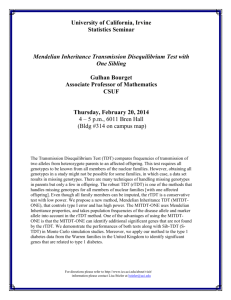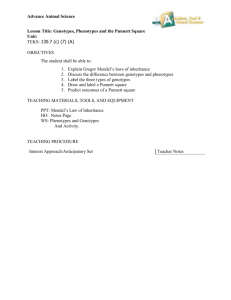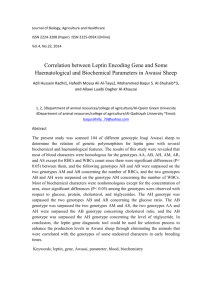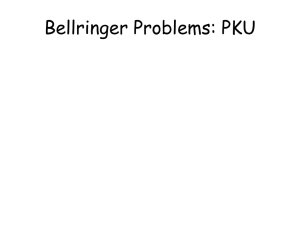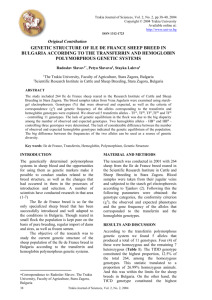Primary: The Flame Algorithm and its Open Source Culture
advertisement
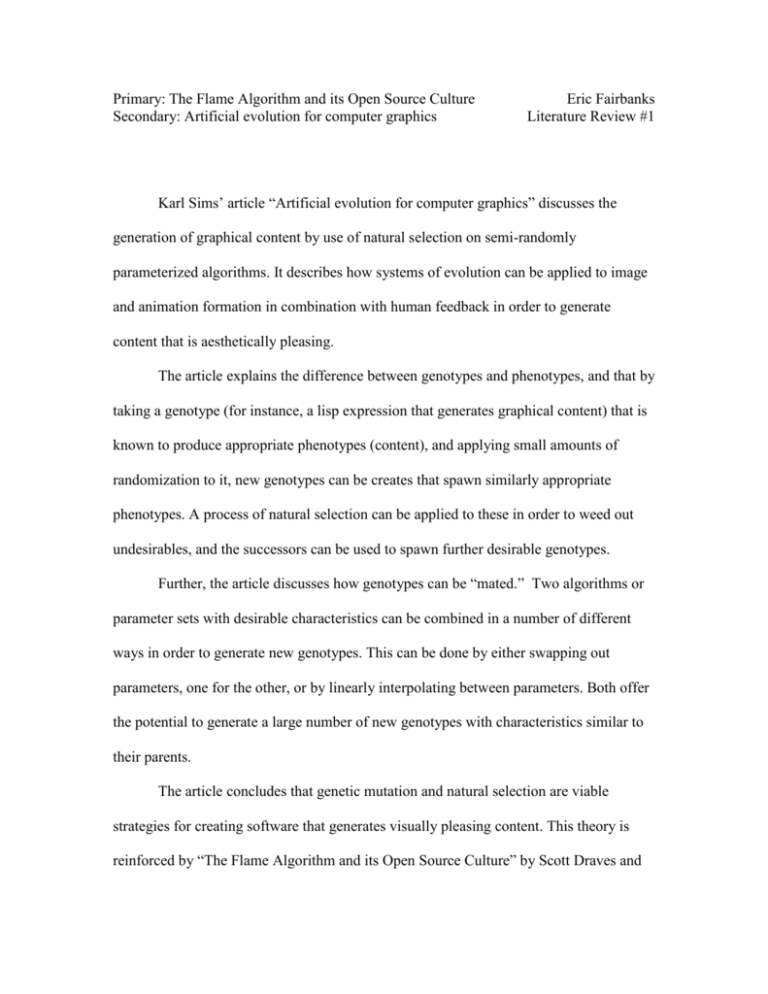
Primary: The Flame Algorithm and its Open Source Culture Secondary: Artificial evolution for computer graphics Eric Fairbanks Literature Review #1 Karl Sims’ article “Artificial evolution for computer graphics” discusses the generation of graphical content by use of natural selection on semi-randomly parameterized algorithms. It describes how systems of evolution can be applied to image and animation formation in combination with human feedback in order to generate content that is aesthetically pleasing. The article explains the difference between genotypes and phenotypes, and that by taking a genotype (for instance, a lisp expression that generates graphical content) that is known to produce appropriate phenotypes (content), and applying small amounts of randomization to it, new genotypes can be creates that spawn similarly appropriate phenotypes. A process of natural selection can be applied to these in order to weed out undesirables, and the successors can be used to spawn further desirable genotypes. Further, the article discusses how genotypes can be “mated.” Two algorithms or parameter sets with desirable characteristics can be combined in a number of different ways in order to generate new genotypes. This can be done by either swapping out parameters, one for the other, or by linearly interpolating between parameters. Both offer the potential to generate a large number of new genotypes with characteristics similar to their parents. The article concludes that genetic mutation and natural selection are viable strategies for creating software that generates visually pleasing content. This theory is reinforced by “The Flame Algorithm and its Open Source Culture” by Scott Draves and Isabel Walcott Draves, which gives a brief history of the iconic Flame algorithm and explains how it has impacted society and modern culture. The Flame algorithm is a perfect example of an algorithm that lends itself naturally to evolution. It is the combination of multiple fractal generation algorithms combined to create a complex, multidimensional, virtual structure. These structures, as the article explained, are easily identifiable and tend to be aesthetically pleasing. As such, they have been featured in artwork ranging for movies, to music videos, to magazine covers. Scott Draves himself is the creator of the popular Electric Sheep screen saver, a shining example of the sort of human-feedback-based, evolutionary graphics algorithm that is described in “Artificial evolution for computer graphics.” Electric sheep has a system that allows users to tweak or randomize parameters without requiring them to understand the underlying system that generates the content. From this, Flame generation algorithms, or “Electric Sheep,” are created. These sheep are selected for desirable traits, stored in an online database, and bred and morphed by a system that the user is neither required to see nor use. The parameters sets, or genomes, are interpolated and meshed together in real time, so that the screensaver, while actually a large, sequential set of mixed genomes, appears to be one fluid, multidimensional fractal. The results are stunning. Electric Sheep is an excellent example of the sort of software outlined in “Artificial evolution for computer graphics.” It takes the concepts contained in the article and applies them in an interesting and practical manner. Most importantly, it was a success. Users were happy to use the program without understanding its inner workings, simply because it generated content that, by its very nature and by their participation, appealed to them.



